
We conduct research that informs conservation and management action at various levels: community, national and international.
Let’s face it; we know that science does not drive decision-making. Politics does. But, we are striving for a world where decision-making is grounded in the facts—about the sharks and rays as well as the greater ecosystem, which has to include the people.
We can’t measure change over time if we don’t have a starting point. So, we’re collecting data on the presence and abundance of shark and ray species to create baselines. We’re also looking for patterns to animal movements and changes to the ecosystem. We conduct research to uncover and explain behaviors that we don’t yet understand and when we get really lucky, we make exciting discoveries, including new species to science!
Although sharks and rays have evolved on the planet for over 400 million years, as scientists, we still have a lot to learn about them. In many places in the Pacific where we work, very little has been written about sharks or rays because they have never been formally studied. Luckily, we’re able to learn from the local people who are often filled with stories that paint a scientific picture. Humans have inhabited and voyaged through many of these places for thousands of years, passing stories down over generations. We are always eager to absorb traditional knowledge and then combine that with our own data to build a better picture of what’s happening.
From a scientific perspective, to understand if a species or area is changing over time, first we must do our best to understand that species or area. We must also look at all of the factors that influence change, including the people relying on or competing with sharks for food or space. Establishing these baselines also allows us to measure change over time.
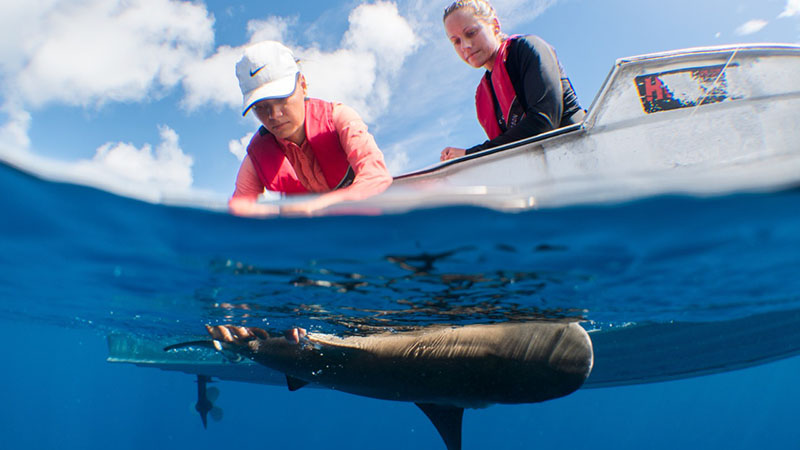
The data collected during exploration and discovery helps us to design effective conservation policies with governing bodies. It’s not only important to us that we have data to back up our position when we’re advocating for a policy—even though we know that data alone does not drive decision-making—but it also matters that we are able to measure its effectiveness from a starting point. We want to inspire you with real change.
Most importantly, exploration is fun. It keeps our eyes open and keeps us curious and connected to the people, places and animals that we work with.
Talking with locals
Local people have been living near and relying on the sea for millennia. They understand their ecosystem and the changes and impacts to it through space and time. Locals can talk about the significance and drivers of change and how their lives and that of the surrounding environment have been impacted. We thrive on the traditional knowledge that is pouring out of the Pacific. And we’re excited to continue to pair that knowledge with other data collection methods.
Looking for ourselves
We spend as much time as we can in and on the water. By diving, fishing and sampling in various conditions and seasons, our team is able to see what species live in an area, any patterns associated with their presence, and, how the human population is interacting with them. For example, how often sharks might be taking fish from fishers.
Using technology
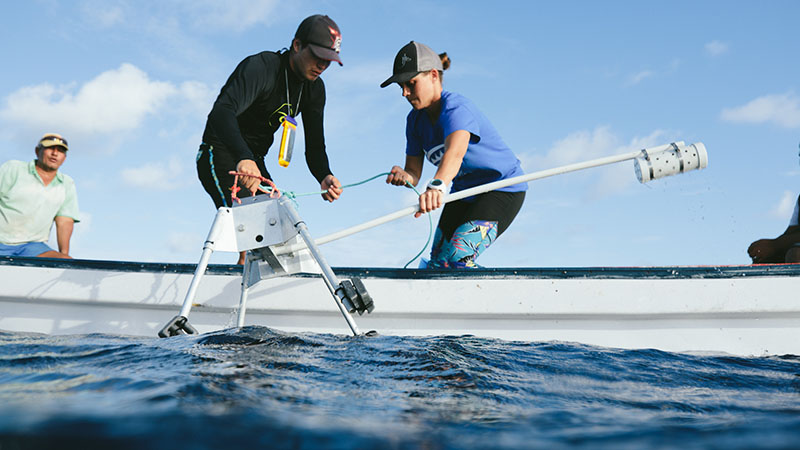 We also want to know what is happening when we aren’t in the water. To do this, we use a variety of tech, including electronic tracking, cameras and baited remote underwater video systems (BRUVS). BRUVS are a great way to see which sharks and rays are present without having people in the water. They also give us valuable information about things like coral cover, bottom contours, water clarity and which non-shark species exist in the area and how they interact with one another. Another form of tech we use are electronic tags, which help us to gather important data on animal movement. The tags (tracking devices) are attached to sharks and allow us to see their movements over short and long distances for specified time periods. Knowing where the animals are going, and when and why they go, helps us to design better policies to protect them.
We also want to know what is happening when we aren’t in the water. To do this, we use a variety of tech, including electronic tracking, cameras and baited remote underwater video systems (BRUVS). BRUVS are a great way to see which sharks and rays are present without having people in the water. They also give us valuable information about things like coral cover, bottom contours, water clarity and which non-shark species exist in the area and how they interact with one another. Another form of tech we use are electronic tags, which help us to gather important data on animal movement. The tags (tracking devices) are attached to sharks and allow us to see their movements over short and long distances for specified time periods. Knowing where the animals are going, and when and why they go, helps us to design better policies to protect them.
Checking catch and landings data
If data exists, we’re going to try to look at it. Each government’s fisheries department usually has some data on shark catch, even if it’s sparse. Often, a regional scientific authority has analyzed population trends for several key species associated with industrial fisheries that operate in that country’s waters. For this reason, we will work with governments to gain access to that data. These data can help us to understand what’s present in the pelagic space nationally. For reef species or pelagic sharks caught by artisanal fishers, however, there is often no record of shark catch at all.
Fishers and sharks are often at odds because they are competing for the same resource—food. When sharks steal food or gear from fishers, conflict may arise. The assessment of conflicts between humans and wildlife began in the terrestrial ecosystem: think wolves, lions and tigers versus livestock. As human populations expand, so do the numbers of mouths to feed and the subsequent areas that humans settle. Land development encroaches on wild places, and thus the interactions between humans and predators in these landscapes increase.

Similar issues have arisen for humans and marine ecosystems with predators like sharks. In much of the Pacific, sharks were traditionally guardians in the culture. They were respected, but if they were caught they were used for food. Today, however, many fishers in the Pacific and beyond are killing sharks out of frustration over losing fish and lures. This isn’t always about sharks being caught as bycatch and not the primary reason for shark mortality on industrial fishing vessels. We are talking about artisanal and low-level commercial fishing by local people. Often the shark is killed to get expensive fishing lures back or in retaliation for taking fish/lures. While efforts to understand human wildlife conflict in terrestrial ecosystems have been going on for decades through mitigation research and implementation programs, this work is just getting started in marine ecosystems.
It’s no secret that human population growth and globalization contribute heavily to declining fish stocks. Technological advances in fishing such as powered boats, freezers, electric reels, and sonar are not only increasing catch rates of fish, but they’re pushing people further afield and increasing interactions with a variety of species of sharks. For example, Fish Aggregating Devices (FADs), which were invented to increase fish abundance in remote areas, also attract sharks. This deepens the competition by reducing the playing field for sharks and fishers because they are now using the same FAD as an opportunity to find food.
For the sake of thriving cultures, people and planet, coexistence is imperative. Therefore, we must work together to design effective mitigation strategies in the marine realm, learning from what has been done on land.
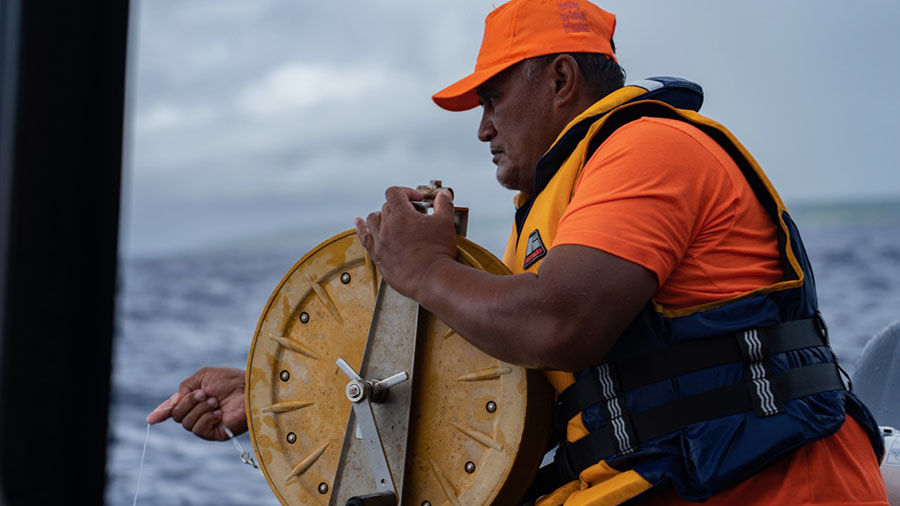
We are working with local fishers, fisheries managers and other stakeholders to understand biophysical and socioeconomic questions such as: How have fishers traditionally handled interactions with sharks in the area? Which sharks are implicated? What are their life history traits? What are their movement patterns and how does that change over time? What are the environmental conditions and are they correlated with increased depredation by sharks? What are the fishers doing (i.e. time of day, bait, techniques, location) and has it changed over time? How does the movement of sharks overlap with the movement of the local boats? What is the composition of catch and how has that changed over time? What factors influence fisher decision-making on whether or not to kill the sharks? How are interactions with sharks affecting livelihoods?
Our current research is looking at these and other factors with small communities of fishers in the Cook Islands and Niue.
Roughly one quarter of all species of sharks and rays are threatened with extinction. Fisheries are the primary driver of shark and ray mortality due to an increasing market for their fins, meat, liver oil, gill plates and other parts.
Sharks and rays are both targeted and captured incidentally on industrial longline, purse seine and trawling vessels that target more lucrative species such as tuna or swordfish. When sharks are not targeted, but captured incidentally, they are considered bycatch. For pelagic species caught as bycatch, many sharks are dead before they are hauled back in. If sharks are alive upon haulback and released, they’re often left with trailing gear (hooks and lines) or injuries that may later result in death, further increasing shark mortality associated with these fisheries – mortality that is undocumented.
While a lot of effort goes into managing fisheries for the more lucrative species such as tuna, there are limited funds and capacity for managing sharks in these fisheries.
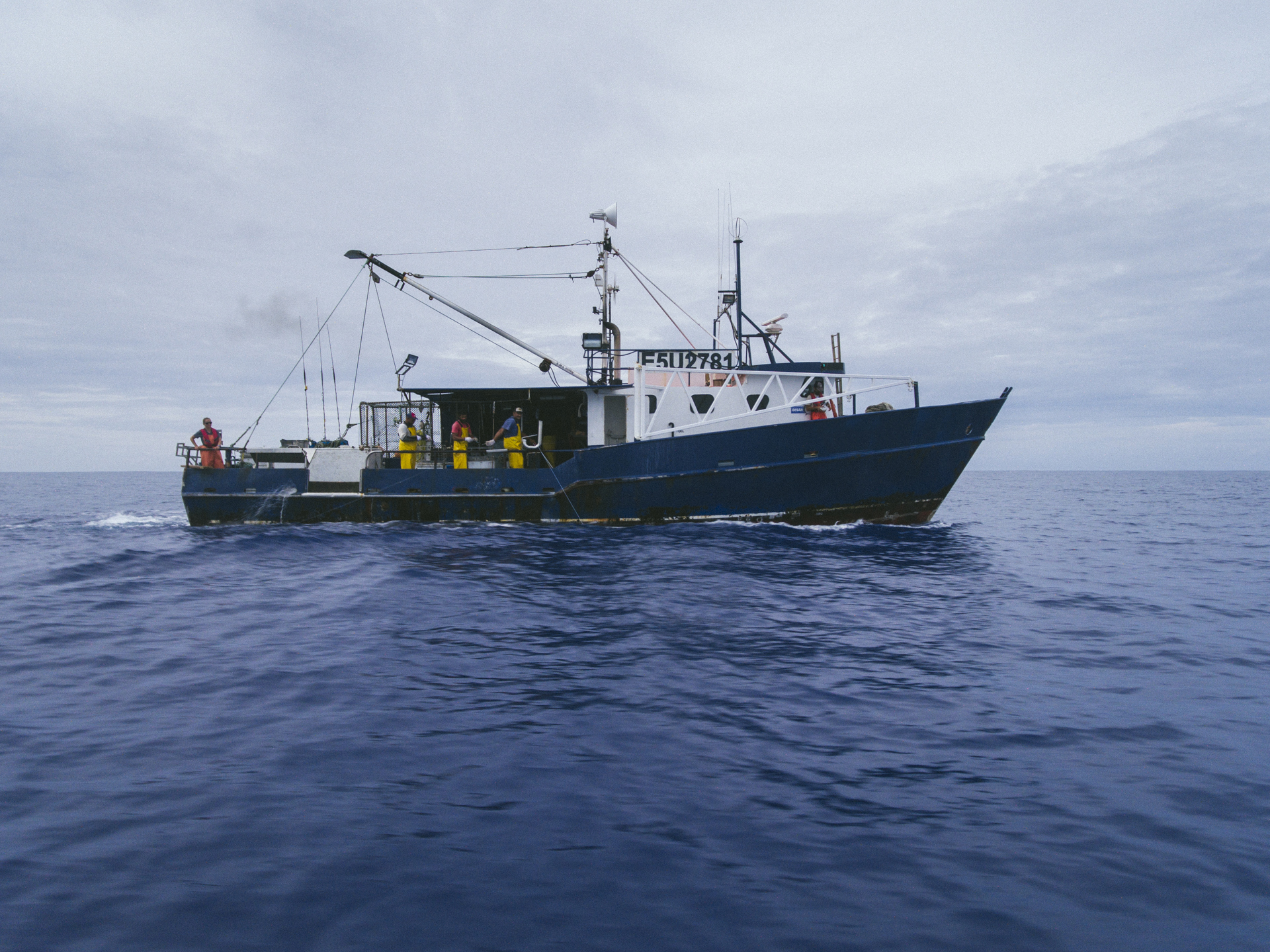 This is compounded by poor or absent data reporting on sharks by the fishers themselves. These data gaps and capacity limitations preclude effective policy creation for the conservation and sustainable management of sharks and their relatives. We want better outcomes for sharks and rays interacting with these fisheries.
This is compounded by poor or absent data reporting on sharks by the fishers themselves. These data gaps and capacity limitations preclude effective policy creation for the conservation and sustainable management of sharks and their relatives. We want better outcomes for sharks and rays interacting with these fisheries.
We are currently working with stakeholders of industrial longline fishing including vessel owners, fishers, fisheries managers and other scientists to both develop and implement strategies that reduce mortality of bycatch in commercial fisheries. We also aim to ensure that the protective measures for sharks and rays that do exist are implemented, enforced and effective.
Because we believe in responsible conservation, we need to know whether the policies we advocate for are effective. It’s a simple question: Do the policies do what they were meant to do and if not, why?
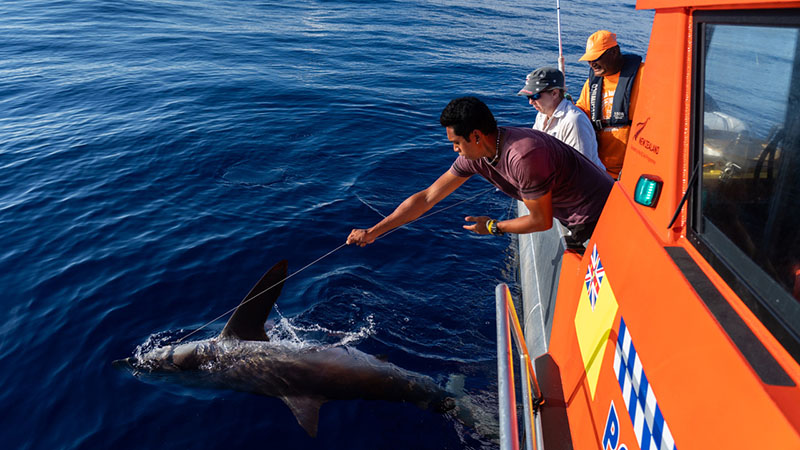 Globally, nearly one quarter of all sharks and rays are threatened with extinction. Increasing human populations means more protein is needed to feed hungry mouths, and that means more pressure on fisheries. Depredation rates (sharks taking hooked fish) are said to have increased locally, which makes local fishers less tolerant of sharing the ocean with sharks. While there have been significant conservation and management gains for sharks over the past decade or so, there are policy implementation challenges. Globally, we’re still a long way from reaching sustainable levels for most shark species. With less than 5% of the world’s oceans strongly protected and with limited funds, capacity, data gaps and depredation compounding fisheries management issues for sharks, we need to ensure that the few policies and protected areas that we do have for sharks… they better work.
Globally, nearly one quarter of all sharks and rays are threatened with extinction. Increasing human populations means more protein is needed to feed hungry mouths, and that means more pressure on fisheries. Depredation rates (sharks taking hooked fish) are said to have increased locally, which makes local fishers less tolerant of sharing the ocean with sharks. While there have been significant conservation and management gains for sharks over the past decade or so, there are policy implementation challenges. Globally, we’re still a long way from reaching sustainable levels for most shark species. With less than 5% of the world’s oceans strongly protected and with limited funds, capacity, data gaps and depredation compounding fisheries management issues for sharks, we need to ensure that the few policies and protected areas that we do have for sharks… they better work.
To understand whether the policies are effective, we combine our scientific expertise with our love of words and our relationships with people. We work to quantify population changes by comparing baselines (if they exist). We’ll look at the movement ecology of the species, for example, if the policy enacts protections in a specific area.
We analyze catch records and look for trends. Has catch composition changed, or as others have previously discovered, have the fishers stopped reporting as a result of protection measures for sharks? Is there a cultural reason for action or inaction?
Data on paper will often show one result while conversations will tell a different story, therefore we must talk to people. Do people know about the policies and the need for conservation and management? Are the fishers onboard? Are they complying when no one is around? How has this affected them and is the policy sustainable?
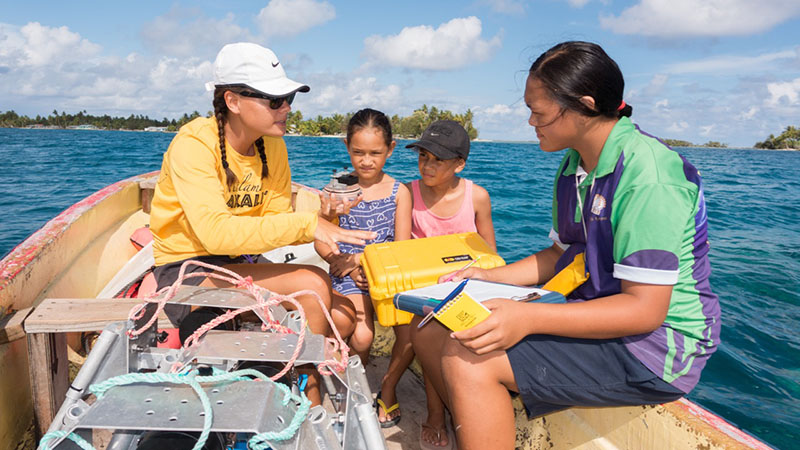 Our love of words comes in handy because we dig into the policies themselves (laws, Bills, Acts and regulations) to identify potential loopholes for continued exploitation. Then, we’ll dig into records to understand whether policy implementation, enforcement and compliance, not just by the fishers, but by the managing body itself is occurring. Are they onboard? Why or why not?
Our love of words comes in handy because we dig into the policies themselves (laws, Bills, Acts and regulations) to identify potential loopholes for continued exploitation. Then, we’ll dig into records to understand whether policy implementation, enforcement and compliance, not just by the fishers, but by the managing body itself is occurring. Are they onboard? Why or why not?
Our work is grounded in an evidence-based approach, but we’d be remiss if we didn’t look at the underlying political landscape, which is imperative in conservation. In all that we do, we strive for a well-rounded approach to help us to understand current drivers and impediments to successful conservation—so we can work to make it better!